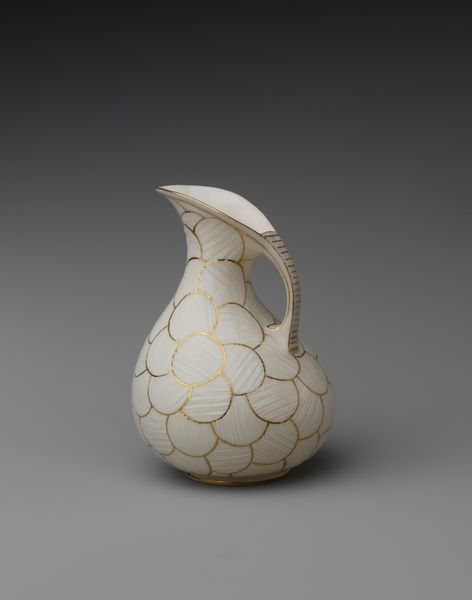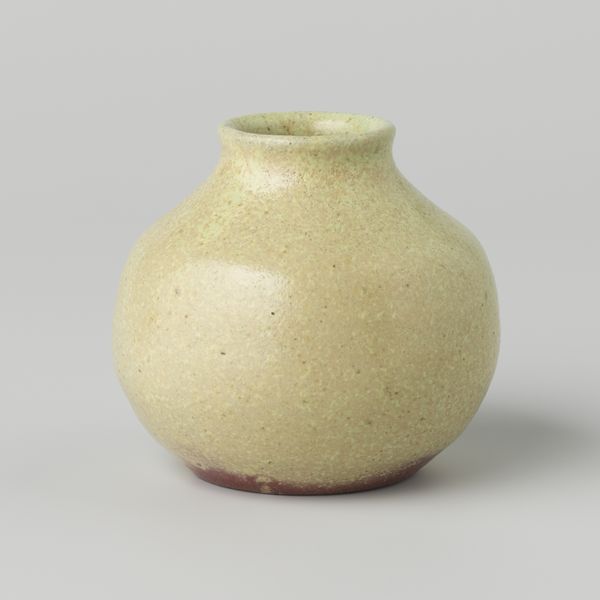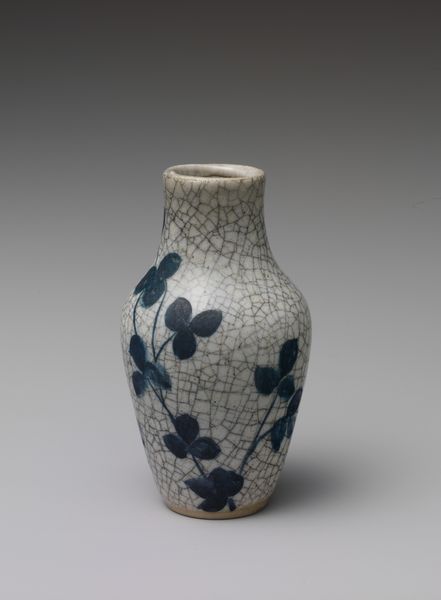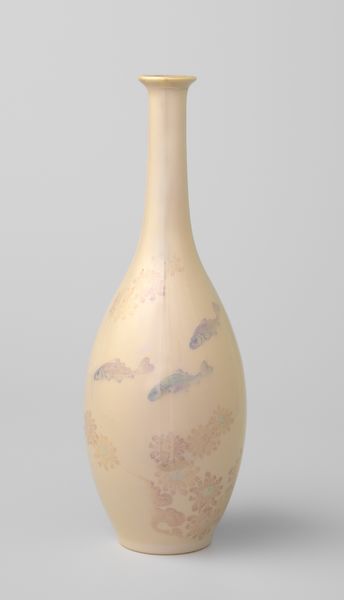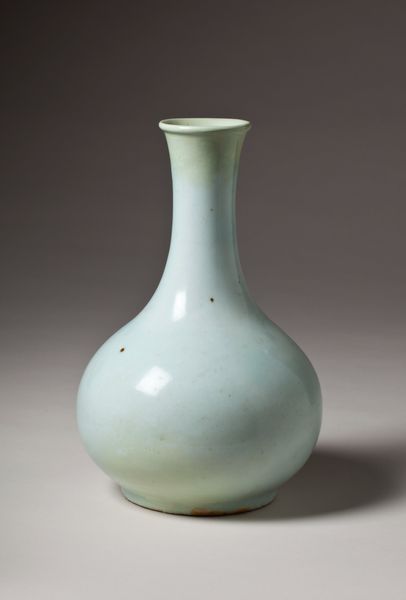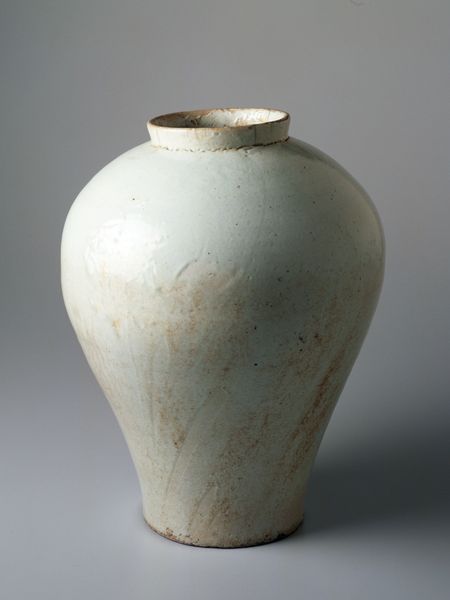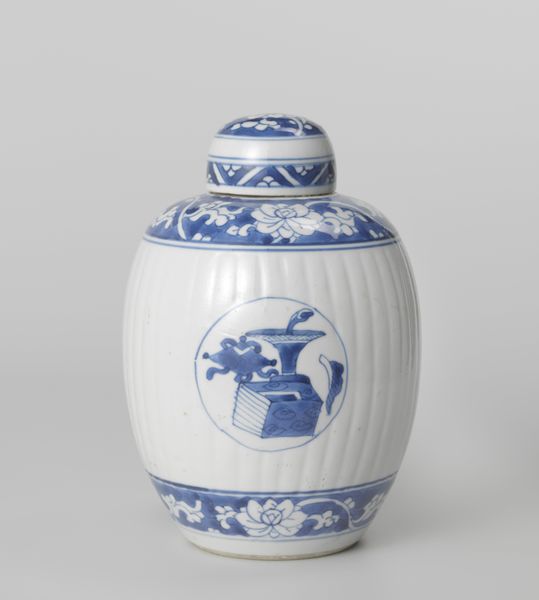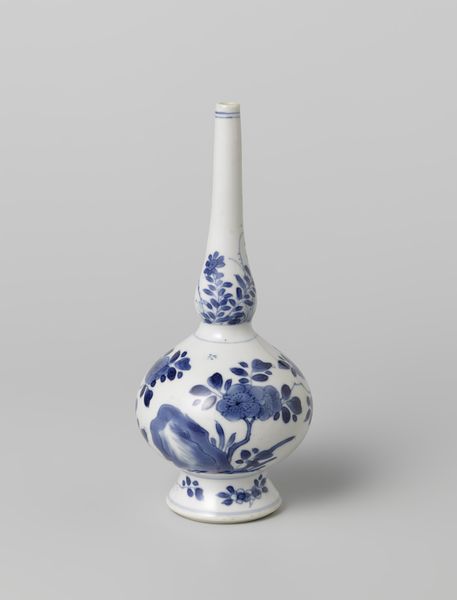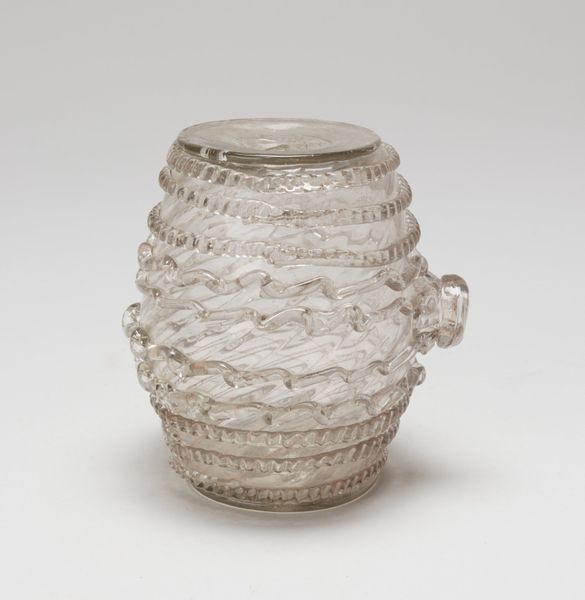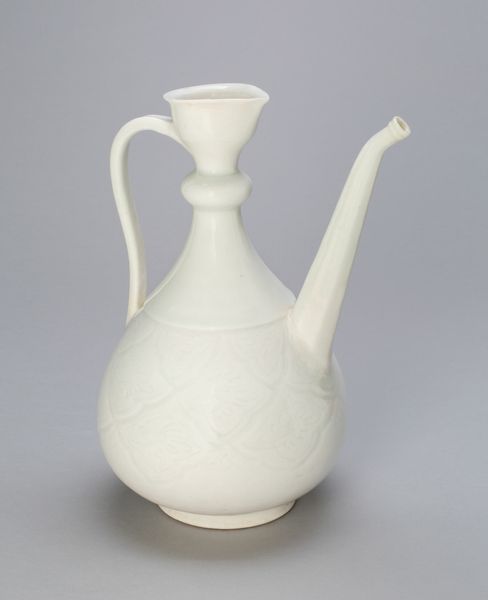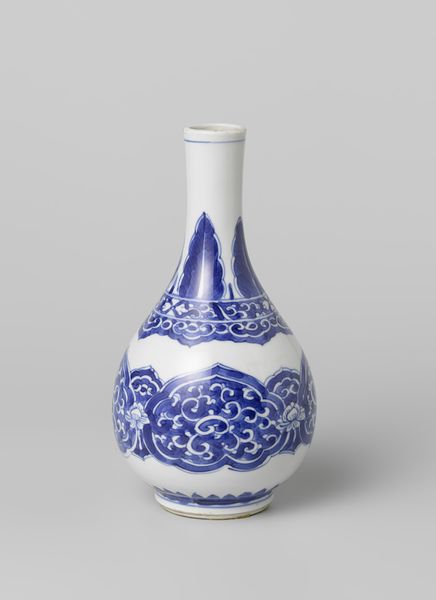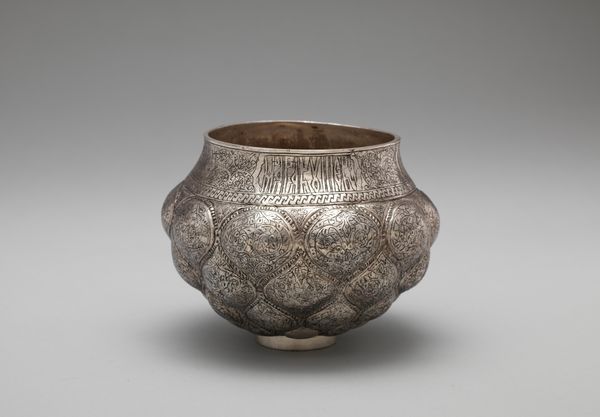
Vase with Horse and Kirin on Geometric Sayagata (key fret) Pattern (one of a pair) 1867 - 1899
0:00
0:00
ceramic
#
asian-art
#
ceramic
#
horse
#
ceramic
Dimensions: H. 4 3/4 in. (12.1 cm); Diam. of rim 1 1/4 in. (3.2 cm); Diam. 4 3/4 in. (12.1 cm); Diam. of base 2 1/4 in. (5.7 cm)
Copyright: Public Domain
This is a porcelain vase with carved and applied decoration made by Makuzu Kōzan I in Japan. The vase is covered in a sayagata pattern, a geometric design of interlocking swastikas. Looking closely, we see a horse and a kirin, a mythical hooved creature often depicted in East Asian art, in a circular panel. The piece reflects Japan's Meiji era. This was a time when Japan was rapidly modernizing and opening up to the West. Japanese artists were eager to prove their skills in the international art market and often combined traditional techniques with new designs and motifs. The sayagata pattern is a traditional Japanese design, while the horse and kirin are both popular motifs in Chinese art. This vase can tell us a lot about the social conditions that shaped artistic production in Japan during the Meiji era. By studying the vase’s materials, techniques, and motifs, as well as the artist's biography and the historical context in which it was made, we can gain a deeper understanding of the complex cultural forces at play during this period.
Comments
No comments
Be the first to comment and join the conversation on the ultimate creative platform.
